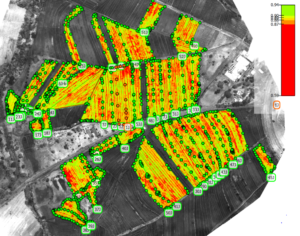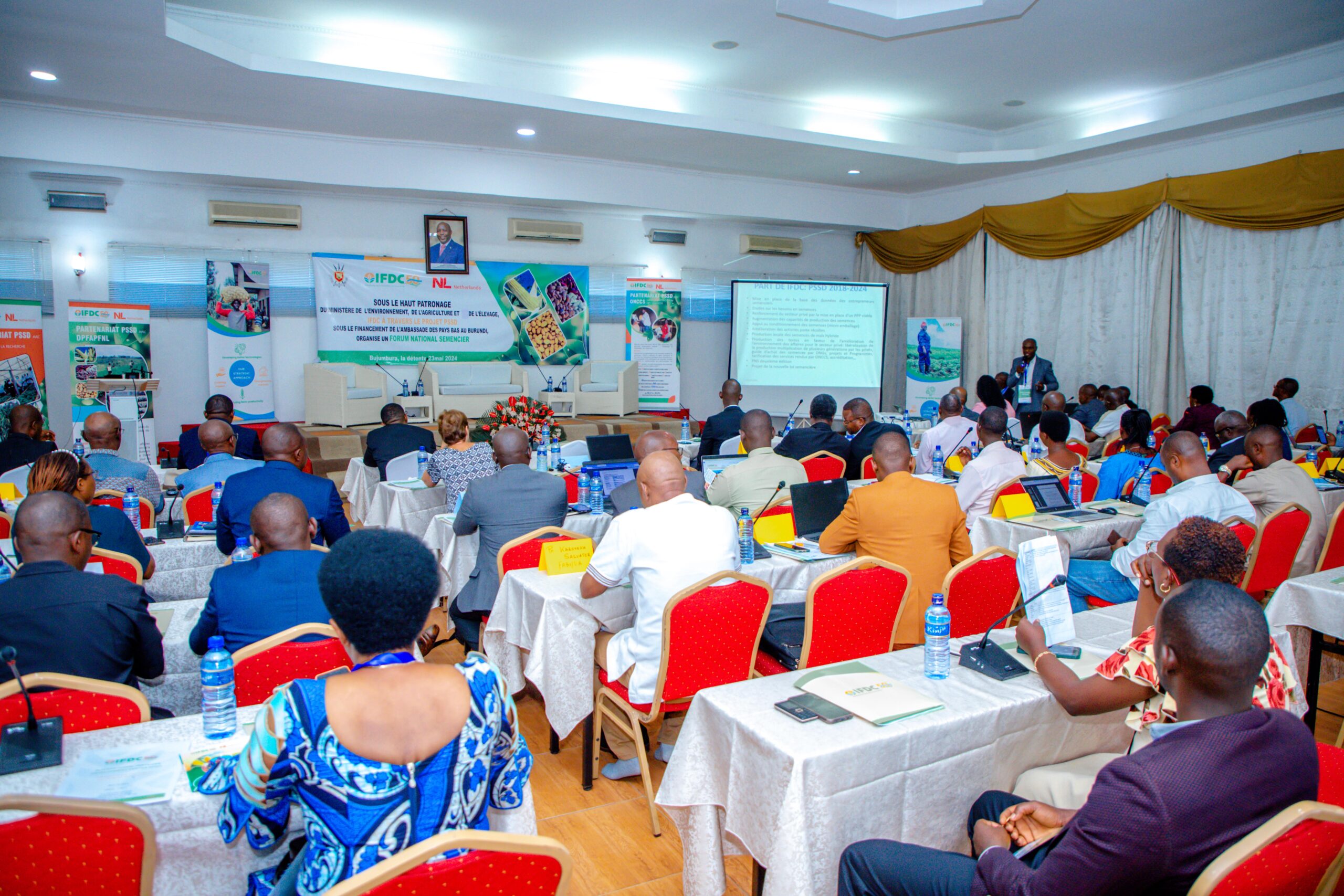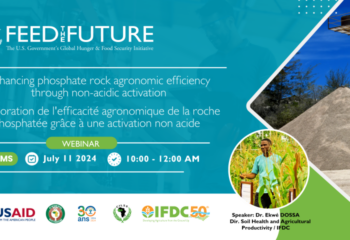
Iowa State University (ISU), through the USAID Ghana Feed the Future Agriculture Technology Transfer (ATT) project, is using drones to evaluate rice production under nitrogen management systems at the Tono irrigation scheme in the Upper East Region of Ghana. With drone technology, ISU compared the health and productivity of rice fertilized using urea deep placement (UDP) and rice grown under non-UDP fertilizer application.
In 2014, ATT introduced UDP, as part of an integrated soil fertility management (ISFM) package, to smallholder rice producers at Tono (as well as other irrigation schemes in northern Ghana). Farmer participatory trials indicated the technology significantly increases farmer yields and profits, with less nutrient losses. The ISU remote sensing team, which includes students from Ghana’s University of Development Studies (UDS), sought to validate these results from UDP use and create a rice yield-forecasting model using drone-captured data. Such a model could help producers better plan for harvest, storage, and marketing of their crop, as well as better understand the specific determinants of smallholder rice productivity under irrigated conditions. Ghana’s Ministry of Food and Agriculture and other governmental agencies also could use the model to make decisions on annual importation or exportation of rice.
The objectives of the study were to:
- Capture and produce Red-Blue-Green and Near Infrared images at the midseason stage of the rice crop.
- Compare the health of the rice crop under UDP and non-UDP treatments.
- Correlate midseason health of rice with end-of-season yield performance.
- Develop a model using midseason remotely sensed information supported by other management parameters to predict end-of-season rice yields.
Results showed that nitrogen management, transplanting date, and vegetation index were the most significant determinants of yield. The study supports the assertion that UDP results in increased yields under flooded conditions. It also found that data collected midseason can be used to predict end-of-season rice yields.

“One of the more notable conclusions of the study is that rice planted under UDP fertilization matured at an accelerated rate,” says Dr. Gary Mullins, ATT Chief of Party. “This means that UDP is also a ‘climate-smart’ technology. By reducing the time it takes to form grain and become ready for harvest, UDP reduces the crop’s exposure to adverse events, such as bird or pest attack, drought, fire, and other uncontrollable impacts.”
The ISU remote sensing team has also used drones to assess the performance of private sector seed producers who were assisted by ATT to produce high-quality, certified maize seeds. The study evaluated producers’ management practices, weed control, and end-of-season yields.
The Feed the Future Ghana Agriculture Technology Transfer (ATT) project is a five-year activity funded by the U.S. Agency for International Development Ghana Mission (USAID/Ghana). The project is increasing the competitiveness of rice, maize, and soybean value chains to foster broad-based, sustained economic growth and productivity by increasing the availability of agricultural technologies in northern Ghana. The program focuses on the Ghana Feed the Future Zone of Influence, which covers the three regions of northern Ghana – Northern, Upper West, and Upper East – and addresses technology constraints in Ghana’s Feed the Future target crops of rice, maize, and soybean.
IFDC is the lead implementer, with additional technical support provided through ISU and the Centre for Development Innovation of Wageningen University in the Netherlands, as well as local farmer-based and non-governmental organizations and public and private sector institutions in Ghana.



